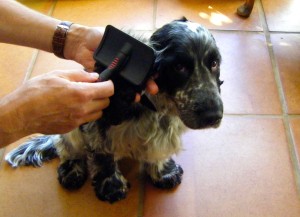Spanish Story for Children
– Maggie is Mischievous
= Maggie es traviesa
Spanish Short Story about Possession, with Video clips, a Worksheet and an Online Quiz.
Grammar
Mi juguete = My toy
Mi is a possessive adjective which describes the noun ‘juguete’ by saying who it belongs to:
What kind of toy is it? It is my toy!
Es mío = It’s mine
Mío is a possessive pronoun.
Pronouns do not just describe nouns, they take their place!
Videos
2. Repeat with only Spanish subtitles:
Online Quiz
This quiz is also available on its own separate page here:
online quiz
– – – –
Worksheet
Video Transcript in Spanish
Este es Billy.
“¡Mucho gusto!
Le presento a mi mamá. Se llama Maggie.
La quiero mucho.
¡Ella manda!
Mira lo que hace …
Es la mañana. Queremos salir.
¡Socorro!
Tiene mi juguete! ¡Es mío! Es mi juguete.
Quiero mi juguete. Tienes mi juguete.
¡Maggie es muy traviesa!
¡Le gusta esconder mi juguete!
Está corriendo. Mira lo que hace.
Esconde mi juguete. Entierra mi juguete.
Mi pobre juguete.
¡Esto no me gusta!”




